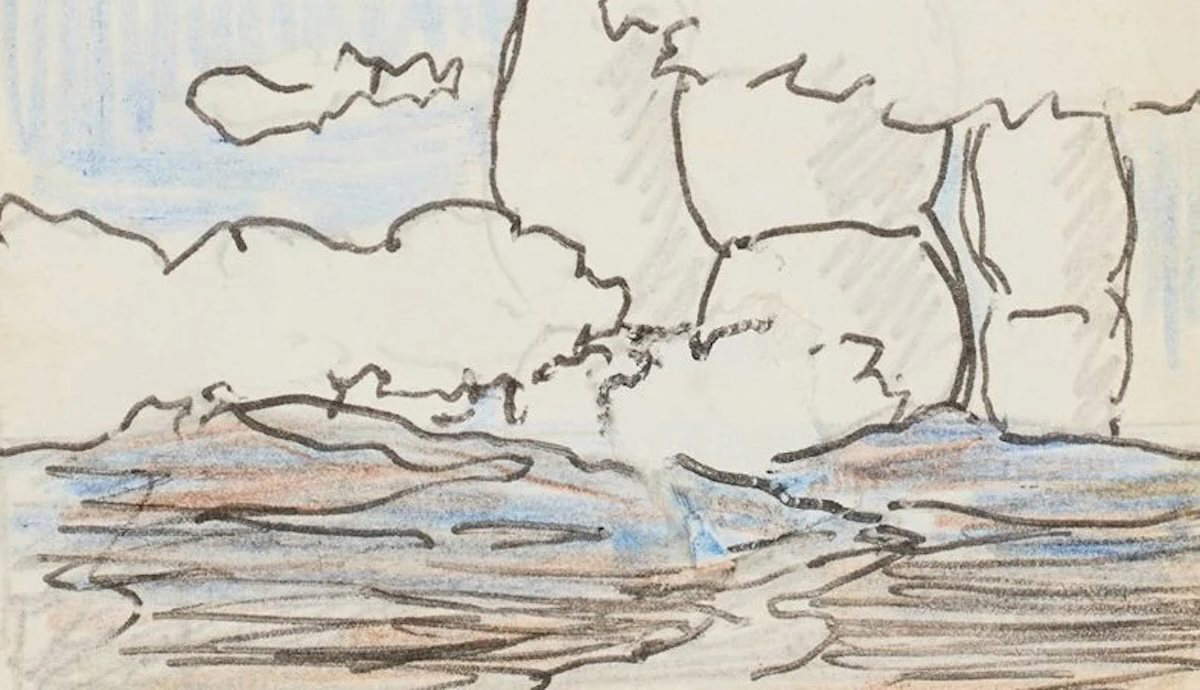
The Prado Museum in Madrid announced that Caravaggio’s Ecce Homo will go on public display for the first time from May 27 through October. One of only around sixty known works by the Italian Baroque master, Ecce Homo was long believed lost until it was discovered at a Spanish art auction in 2021, having been attributed to a Spanish artist’s circle of followers.
Latin for “Behold the Man,” Ecce Homo is a small yet remarkably expressive oil painting. It depicts a key moment from the Passion of Jesus Christ as recoded in the Gospel of John. Scourged, bound, and wearing a crown of thorns, Christ is presented to a jeering crowd shortly before his crucifixion. The painting showcases innovative compositional drama, stark contrasts of light and shadow, and evocative physical realism—all hallmarks of Caravaggio’s later work.
The Multi-Million Dollar Painting Nearly Sold For $1,600

In April 2021, the lost Caravaggio painting was slated to be auctioned in Madrid. Then attributed to an unnamed follower of 17th-century Spanish painter José de Ribera, Ecce Homo was given a starting price of $1,600. The painting may have been misattributed because Ribera, who studied in Italy, was a known admirer of Caravaggio’s signature chiaroscuro technique.
When Ecce Homo appeared at auction, speculation arose about its true origins and potentially astronomical monetary value. At the time, the Italian art critic and politician Vittorio Sgarbi remarked, “I see it and immediately realize that the work is by Caravaggio…. Its price could be around €100 million to €150 million if you sell it privately.” Experts at the Prado Museum alerted the Spanish government that Ecce Homo could be a lost Caravaggio, citing “sufficient stylistic and documentary evidence.” Government authorities quickly responded by halting the auction and instituting an export ban on the painting until the claim could be verified.
An “Unprecedented” Process of Reattribution and Restoration

Under regional government supervision, the Prado collaborated with the Colnaghi art gallery in Madrid to definitively attribute Ecce Homo. Four leading experts on Caravaggio and Baroque painting have since expressed certainty that Ecce Homo was painte by Caravaggio. Maria Cristina Terzaghi, a restoration specialist, said, “The speed of consensus around the work being a Caravaggio upon its rediscovery was absolutely unprecedented in the critical history of the painter, on whom scholars have rarely agreed, at least in the last forty years.”
The process of reattribution also revealed the painting’s provenance. Ecce Homo was brought from Italy to Spain sometime in the 17th century, where it entered the royal collection of art. The painting later left this collection during the Napoleonic invasion and fell into private hands. From the 19th century until the painting’s rediscovery at auction, it belonged to the same family in Madrid, having been passed down for generations. The family recently sold the painting to a private buyer for an unknown sum. The new owner facilitated the lost Caravaggio painting’s conservation and upcoming public presentation at the Prado.
The Lost Caravaggio is “One of the Greatest Discoveries in the History of Art”

“In the last hundred years, no artist more than Caravaggio, with his adventurous biography and unmistakable style, has fascinated audiences of all ages and engaged scholars from halfway around the world,” said Jorge Coll, CEO of Colnaghi. “This work therefore presents one of the greatest discoveries in the history of art.”
The Prado’s special exhibition of the newly restored and reattributed Ecce Homo opens to the public on May 27. It will be accompanied by a new publication of essays by leading Caravaggio experts. After the exhibition closes in October, Ecce Homo will be displayed in the Prado’s permanent collection for a further four months alongside Caravaggio’s earlier Biblical masterpiece David and Goliath.










